Volume 10 #1
Contents
- Fyodorova Responses of noctuid tympanal organs (Amphipyra perflua: Noctuidae) to the impulse ultrasound signals
- Endolymph diffusion as a possible mechanism of vestibular perception
- Analyzis of structure changes of the spyral organ evoked by vybrations
- Perception of visual entire objects
- Reception of low-frequency acoustic oscillations by cutaneous mechanoreceptors
- Reception of low-frequency acoustic oscillations by visceral mechanoreceptors
- Computer testing of the human binocular visual System. I. Potential possibilityes and perspectives
- Computer testing of the human binocular visual system. II. Direct testing of the main clinical parameters
- Computer testing of human binocular visual system. III. Using of indirect appraisals
- Mechano-activated ion currents of sensilla chaetica in the floor - beetle antennal
- Endolymph diffusion as a possible mechanism of vestibular perception
- Low - frequency bioacoustics
